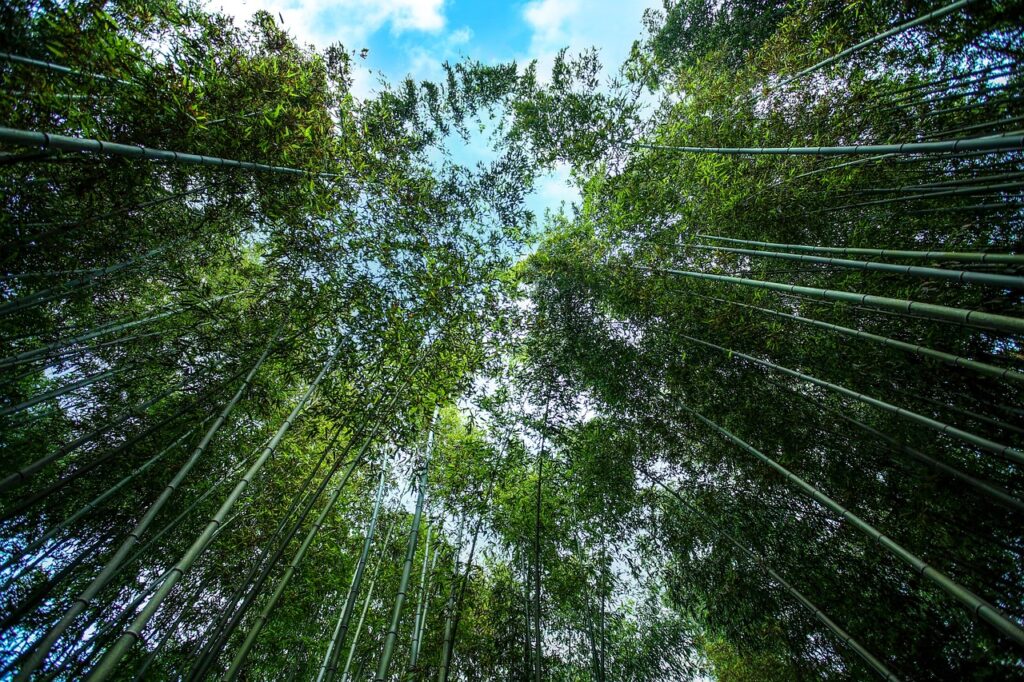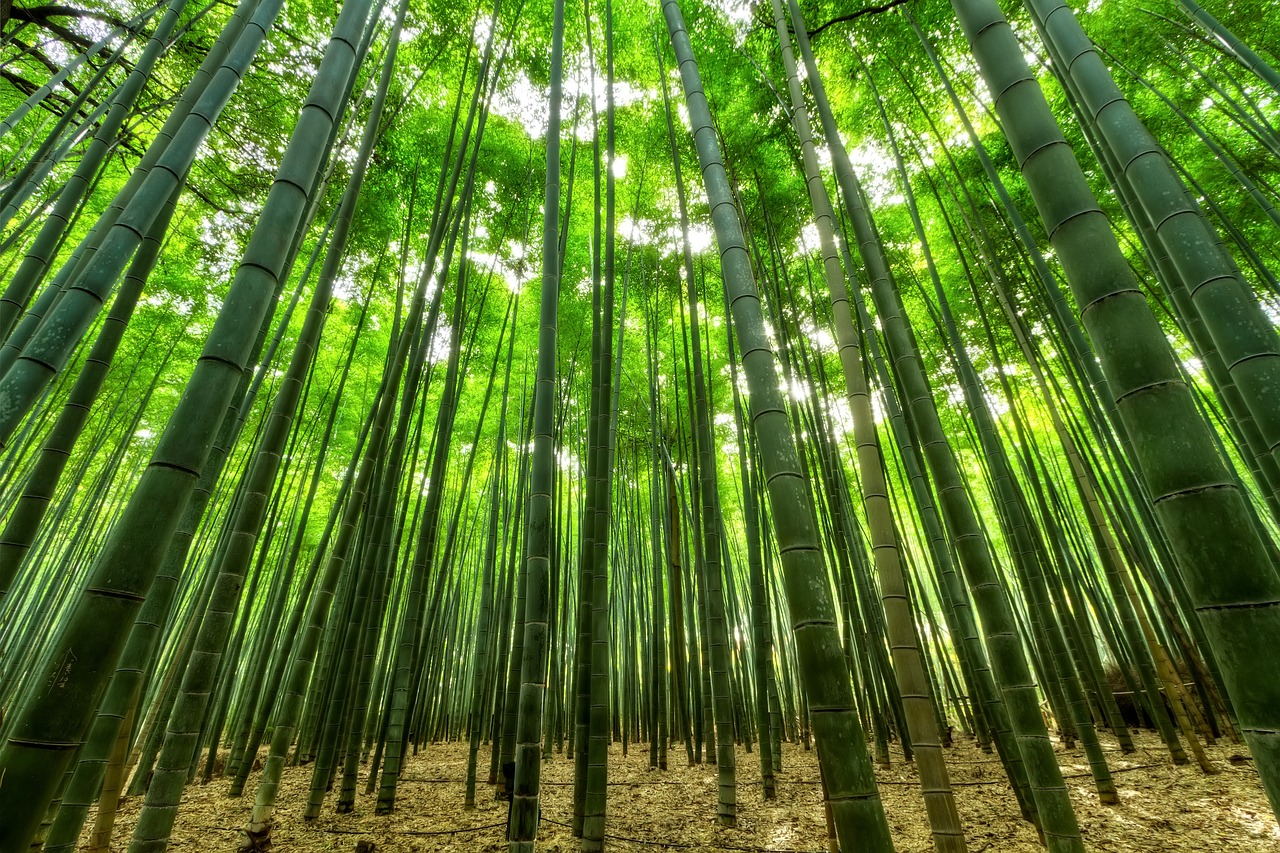Bamboo groves are a familiar sight in many regions, and among them, one of the most iconic species is “Moso bamboo” (Phyllostachys edulis). But did you know that this very plant might become a powerful tool in environmental remediation? According to a peer-reviewed paper published in June 2025, Moso bamboo exhibits remarkable tolerance to lead (Pb) and has the ability to efficiently accumulate it in its roots and leaves.
Lead is a toxic heavy metal that often lingers in soil due to legacy infrastructure, abandoned mining sites, traffic emissions, and residual pesticides or wastewater. It poses serious risks to ecosystems and human health. In urban areas especially, invisible lead accumulation is not uncommon, and long-term exposure can lead to health issues in children and impacts on the food chain.
Traditionally, remediation of lead-contaminated soil has involved mechanical excavation, chemical stabilization, or other infrastructure-intensive methods—each posing challenges in terms of cost, labor, and environmental safety. That’s where the concept of “bioremediation” comes in. Using fast-growing, low-maintenance plants offers an eco-friendly and cost-effective approach.
The paper highlighted here focuses on the potential of Moso bamboo for such bioremediation, particularly how it responds to lead contamination and what mechanisms are involved. This is not just theoretical—it represents an important first step toward practical field applications.
The Triple Defense Strategy Revealed by the Study
In the study, Moso bamboo seedlings were exposed to various concentrations of lead (Pb) for 18 days, and their physiological and molecular responses were meticulously analyzed. The results were striking: even under high lead concentrations, Moso bamboo maintained healthy growth in its above-ground parts and sustained normal photosynthetic functions, such as PSII activity.
Specifically, even at a high concentration of 50 μM Pb, root growth was somewhat suppressed, but the growth of shoots and leaves remained largely unaffected. Moreover, the Fv/Fm ratio—an important indicator of photosynthetic efficiency—remained stable. These findings clearly demonstrate the exceptional lead tolerance of Moso bamboo.
The mechanisms underlying this tolerance were found to be threefold:
- Selective Suppression of Lead Uptake
The expression of metal transporters such as ZIP family members and IRT2 was downregulated, reducing excessive uptake of lead. - Intracellular Compartmentalization of Lead
The expression of tonoplast-localized transporters like PeVIT2 and PeMTP1 was upregulated, sequestering absorbed lead into safer compartments within the cell. - Immobilization of Lead via Cell Wall Fortification
Genes involved in cellulose and pectin biosynthesis were upregulated, leading to thickened cell walls that physically trap lead outside the cytoplasm.
These three defense mechanisms work in concert, enabling Moso bamboo to not only survive but thrive in lead-contaminated environments.
Why Are the Above-Ground Parts Unaffected?
When plants are exposed to toxic substances, it typically results in symptoms such as chlorosis (yellowing of leaves), stunted growth, or even death. However, Moso bamboo continues to grow normally—even under relatively high concentrations of lead—without any significant visual damage.
The secret lies in the distribution of lead within the plant. Measurements using ICP-MS revealed that lead accumulates primarily in the roots, with only limited translocation to stems and leaves. Remarkably, older leaves contain much higher concentrations of lead compared to newer ones—a distribution pattern that stands out.
This uneven distribution has ecological advantages, as it prevents lead from entering the food chain. For example, the edible parts of bamboo, such as young shoots (bamboo shoots), seem to accumulate only minimal amounts of lead. From a food safety perspective, this is an important finding. Furthermore, microscopy-based lead localization confirmed that lead concentrates in the pericycle and epidermal cells of roots, reinforcing the idea that translocation to above-ground parts is actively restricted.
Safety of Edible Parts and Agricultural Benefits
Bamboo is widely known for its edible young shoots, a cherished spring delicacy. The study’s findings that lead accumulates mainly in roots and older leaves—but not in younger parts—provides reassuring evidence for food safety. Given that bamboo shoots are formed underground as immature tissues, it is strongly suggested that lead translocation to these edible parts is minimal.
This implies that even in areas at risk of contamination, careful selection of harvestable parts may allow bamboo to be cultivated as a safe food crop. Moreover, bamboo grows rapidly and can reliably produce shoots annually, making it a low-input, high-yield plant with excellent agricultural potential.
Looking ahead, Moso bamboo may prove to be a multi-functional plant capable of both remediating contaminated land and providing food, especially in peri-urban areas with idle or mildly polluted farmland.
Thanks to its ability to isolate lead in specific tissues and suppress systemic distribution, Moso bamboo effectively protects itself while functioning as a biological filter that captures and stores lead within its biomass.
Where Can It Be Used? Lead-Contaminated Lands, Urban Areas, Former Mining Sites…
How can the findings of this study be applied in the real world? That is perhaps the most crucial question. In reality, the problem of lead contamination is not limited to agricultural fields or forests—it extends across a wide range of environments, including urban and industrial areas.
For example, soils along old roadways, former building sites that used lead-based paint, and land once used for mining are all known hotspots for lead pollution. In such places, introducing Moso bamboo can offer multiple benefits:
- Low-maintenance greening of contaminated sites
- Gradual uptake and stabilization of lead present in the soil
- Environmental restoration while preserving greenery and landscape aesthetics
This “triple benefit” makes Moso bamboo a strong candidate for remediation in diverse settings.
Additionally, in urban parks and green spaces, bamboo could be redefined not just as an ornamental plant, but as green infrastructure with environmental remediation capabilities. By shifting this perspective, city planners and landscape designers could integrate bamboo into urban layouts as a new type of nature-based solution.
Why Bamboo Might Play a Key Role in Future Environmental Restoration
When considering environmental remediation, conventional approaches often rely on costly infrastructure, advanced technologies, and intensive labor. However, by leveraging plants—self-propagating and environmentally adaptive organisms—we may be able to envision an entirely new approach to solving pollution.
Moso bamboo offers several advantages:
- Extremely rapid growth, allowing for annual harvests
- A root system that helps stabilize soil
- Potential tolerance to multiple heavy metals beyond lead, such as cadmium, zinc, and copper
These characteristics give Moso bamboo unique strengths that are difficult to replicate with other plant species. Harnessing these traits, both public-sector projects and private developments could implement nature-based remediation strategies—where simply planting bamboo sets in motion the recovery of contaminated land.
Looking forward, further field studies are needed to test bamboo’s effectiveness across various soil types and combinations of heavy metals. Additionally, combining bamboo with other plant species may lead to synergistic effects, enhancing remediation efficiency. From a plant breeding standpoint, metal transporter and cell wall-related genes identified in the study may serve as molecular markers for selecting or engineering even more robust cultivars.
A plant as familiar as bamboo may turn out to be a vital player in the restoration of our urban landscapes, farmlands, and ecosystems. What this research reveals is not merely a fascinating biological mechanism—it opens the door to a new kind of green infrastructure, one rooted in nature’s own capacity to heal.




コメント